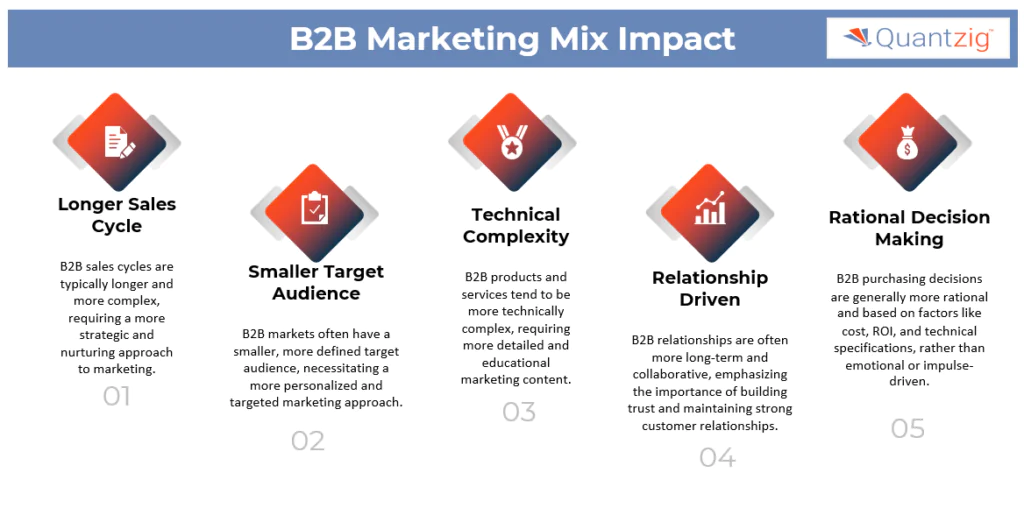Optimizing Your Marketing Mix for Greater ROI
A company’s marketing mix determines how effectively it engages buyers and converts interest into revenue. The mix encompasses every channel, tactic, and investment decision that shapes how prospects encounter and interact with a brand. Without thoughtful allocation, businesses risk overspending in areas that yield limited results while underfunding those that deliver stronger returns.
Marketing mix optimization ensures resources align with buyer behavior, enabling organizations to spend smarter and measure real impact. With tighter budgets and rising expectations for accountability, marketing leaders must fine-tune their mix through data-driven insights, technology, and continuous refinement. The outcome is clear: higher ROI and stronger demand generation.
Quick Takeaways
- Marketing mix optimization aligns spend with buyer behaviors to improve ROI.
- Data-driven insights and attribution models reveal which channels drive the most impact.
- Technology and automation streamline execution and enable agile adjustments.
- Continuous testing and measurement ensure the mix evolves with buyer preferences.
The Importance of Marketing Mix Optimization
Many organizations operate with legacy budget splits or instinct-driven allocations. For example, teams may pour money into digital ads because they appear measurable, while underestimating the long-term value of content or events. This imbalance leads to wasted spend and inconsistent buyer journeys.

Optimizing the marketing mix allows businesses to prioritize high-performing channels and reduce investment in those that contribute little to the pipeline. It also creates better alignment between marketing and sales, as both teams gain clarity on which channels produce qualified leads. By regularly evaluating and adjusting the mix, organizations ensure campaigns remain relevant to buyers and tightly connected to revenue goals.
Data-Driven Insights for Smarter Allocation
At the heart of marketing mix optimization lies data. Analytics provide a clear picture of which tactics generate the strongest returns and which fail to justify their cost. Modern tools allow marketers to track every touchpoint in the buyer journey and analyze how different channels contribute to conversions.
Multi-touch attribution is especially valuable. Unlike first- or last-touch models, it assigns credit across the entire journey, showing how awareness campaigns, nurture emails, and sales conversations collectively drive outcomes. Predictive analytics adds another layer by forecasting channel performance and suggesting optimal budget reallocations.
Benefits of a data-driven approach include:
- Greater visibility into underperforming vs. high-performing channels.
- More accurate forecasts for budget reallocation.
- Stronger evidence to justify investment decisions to stakeholders.
By leaning on data, organizations reduce guesswork and make confident adjustments that directly improve ROI.
Balancing Traditional and Digital Channels
While digital dominates modern marketing, traditional tactics continue to hold value. Events, phone outreach, and direct mail provide personal connections that build trust and credibility. Buyers often engage across both digital and offline touchpoints before making decisions.
The key is balance. Organizations should avoid over-indexing on one area at the expense of another. For example, pairing event attendance with targeted digital campaigns amplifies exposure, while following up direct mail with personalized emails keeps momentum strong. The most effective strategies integrate traditional and digital channels to create seamless buyer journeys.
Consistency is essential. A prospect who encounters a message on social media should see the same themes reinforced during an event presentation or sales call. Unified messaging ensures trust and prevents confusion, driving stronger engagement throughout the funnel.
Leveraging Technology for Optimization
Technology provides the tools needed to refine the marketing mix with precision. These tools bring clarity, speed, and efficiency to budget allocation.
Marketing Automation
Automation platforms streamline campaign execution, enabling orchestration across email, social, and digital advertising. They also deliver real-time data, allowing marketers to pivot quickly when results lag.
AI and Predictive Tools
AI-driven solutions analyze past performance, forecast channel ROI, and recommend adjustments. These insights ensure every dollar is used strategically and reduce reliance on trial-and-error.
CRM and Analytics Integrations
Integrating CRM systems with marketing analytics links campaign activity to sales outcomes. Teams can track which leads convert to opportunities and revenue, proving the value of each channel.
By layering these technologies, organizations reduce wasted spend, accelerate reporting, and create a continuous feedback loop for smarter decision-making.
Testing and Iteration: Building a Smarter Mix
Optimization is not a one-time project but an iterative process. Organizations must continuously test, learn, and refine their marketing mix.
A/B testing remains one of the most reliable methods. By testing variations in messaging, creative, or channel use, businesses can identify what resonates most with buyers.
Other methods to refine the mix include:
- Pilot programs: Run small-scale campaigns to gauge performance before scaling.
- Customer feedback: Collect input through surveys and engagement data to inform decisions.
- Regular reviews: Assess performance quarterly or monthly to stay aligned with shifting buyer preferences.
This approach ensures resources are allocated based on evidence, not assumptions.
Measuring ROI Across the Marketing Mix
The true test of marketing mix optimization lies in its ability to demonstrate ROI. This requires tracking metrics that directly connect marketing activity to revenue outcomes.
Key measures include:
- Customer acquisition cost
- Conversion rates
- Pipeline contribution
- Customer lifetime value
Evaluating ROI requires a holistic view of the marketing mix. The diagram below highlights the seven elements (product, promotion, price, place, people, process, and physical evidence) that must all be measured to understand true performance.

Dashboards and reporting tools consolidate these insights, giving leaders visibility into which campaigns and channels deliver the most significant returns. Clear reporting also strengthens marketing’s credibility within the organization, showing executives how every dollar contributes to growth.
For example, if analytics reveal that webinars generate lower acquisition costs than digital ads, leaders can confidently shift budgets toward webinars while demonstrating the decision’s financial logic. Transparent measurement ensures that optimization decisions are data-backed and defensible.
Optimize Your Marketing Mix with Televerde
Marketing mix optimization is a continual effort to ensure resources generate maximum impact. By leveraging data-driven insights, balancing traditional and digital channels, deploying technology, and embracing iterative testing, organizations can transform their marketing performance. The reward is greater efficiency, improved buyer engagement, and stronger ROI.
Ready to optimize your marketing mix? Let’s connect and build a strategy tailored to your business needs. Contact us to learn more.


